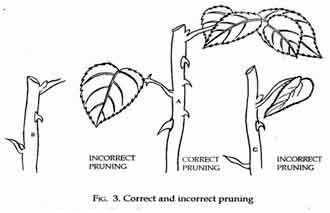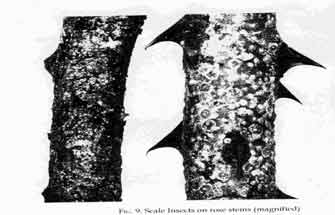|
 |
| |
| |
|
CLASSIFICATION OF ROSE
VARIETIES
Dr. S. S. Sindhu
Project Coordinator (Flori.)
& Formely Director of
Horticulture
Principal Scientist,
Division of Floriculture and
Landscaping, IARI, New Delhi
110012
Email:
sssindhu2003@yahoo.co.in
There are a few varieties
that are classified
differently in various
countries by various Rose
Societies. To prevent
confusion, the Rose Society
of India has decided to
adopt the following grouping
in respect of these
varieties. |
|
|
|
|
Evening Star |
HT |
|
|
|
|
|
Africa Star |
Florbunda |
|
|
|
|
Fresh Pink |
Polyantha |
|
|
|
|
Pettle Folie |
Miniature
Climbing |
|
|
|
1.Classification of Roses:
The detail classification of
roses based on colour is
given below
(1) Classification of HT
Roses in colour groups
Section 1 : White Group |
|
Dr. Homi Bhabha |
Evening Star |
Garden Party |
John F.Kennedy |
|
|
Louisiana |
Virgo |
White Masterpiece |
|
|
Section 2: Yellow Group |
|
Lemon Spice |
Golden Splendor |
Golden Giant |
Pusa Sonia |
|
|
Gold Medal |
|
|
|
Section 3: Orange Scarlet
Group |
|
Command Preformance |
Montezuma |
Future |
Summer Holiday |
|
|
Super Star |
|
|
|
|
Section 4: Red Group |
|
Avon |
Christion Dior |
Happiness |
Mr. Lincoln |
|
|
Oklahoma |
Papa Meiland |
Red Chief |
Red Lion |
|
|
Red Devil |
Red Planet |
|
|
|
Section 5: Deep Pink Group |
|
Century Two |
Dr. B.P.Pal |
First Prize |
Mrinalini |
|
Section 6: Light Pink Group |
|
Apsara |
Jadis |
Dil-ki-Rani |
Eiffel Tower |
|
|
Pastel Delight |
Royal Highness |
|
|
|
Section 7 : Lavander Mauve
Group |
|
Blue Moon |
Blue Nile |
Blue Ocean |
Kasturi Rangan |
|
|
Lady X |
Silver Star |
Sterling Silver |
Nilambri |
|
|
Section 8 : Apricot Group |
|
Ambassadir |
Brandy |
Doris Tysterma |
Valencia |
|
|
Whisky |
|
|
|
|
Section 9 : Bio-colour Group |
|
Bijazzo |
Disco |
Love |
Nandini |
|
|
Piccadilly |
Sentiments |
|
|
|
Section 10 : Colour Blend
etc. Group |
|
Ajantha Caves |
American Heritage |
Cereless Love |
Double Delight |
|
|
Eiko |
Kiss of Fire |
Paradise |
|
|
(2)An illustrative list of
typical HT-type Floribundas |
|
Delhi Princess |
Prema |
Queen Elizabeth |
Sea Pearl |
|
|
Surya Kiran |
Surya Kiran |
Neelambari |
Pink Parfait |
|
(3) Floribunda type : Mahak, Golden, Prema, Summer Snow, Rays, Sobhag, Deccan Delight,
Rajamani, Sunil Gavaskar,
Sindoor, Arunima, Deepika,
Chandrama, Nav Sadabahar,
Suchitra, Kusum, Chitchor
(4) Polyantha
: Rashmi, Pink Spray, Barani,
Nartaki, Vaterty
(5) Climbing and rambling
type
: |
|
Cocktail |
Golden Showers |
Prosperity |
|
|
|
Campassion |
Delhi White Pearl |
Clg. Miss Horp |
|
|
|
Clg. Avar |
Climbing Mister Lincoln |
Kanyakumari |
|
|
|
Landour |
|
|
|
|
(6) Miniature
: Dazling Flam, Dazler,
Beauty Scarlet, Lavander
Jewel
Common Root Stock
1.
Rosa mutiflora
(Suitable for Central Part)
2.
Rosa indica
var. odorata ( Common in
North)
3.
Rosa borbiana
(Edward Rose) used in south
India
Propagation Methods
Rootstock are raised and
then 'T'- budding is common
in rose. Under North Indian
conditions budding are done
during Jan.-Feb. whereas
under Bangalore and Pune
conditions it can be done
any time.
R & D on Roses
The major work on roses are
being carried out at IARI,
Pusa, New Delhi. However, a
good work on research &
development has been carried
out at IIHR, Bangalore, Pune,
NBRI, Lucknow. Even some
nursery man M/S K.G.& Sons,
Bangalore and many others
are also multiplying true to
type rose varieties.
2. Disbudding,
De-shooting and specific
Pruning
i)
Disbudding is also an
important operation by
removing buds and retaining
only central resulting in
large flowers with better
quality.
ii)
De-shooting is removal
of lateral shoots to allow
only terminal shoots. It is
necessary otherwise plants
get heavily branched with
large number of small
flowers.
iii)
Pruning is an important
operation for maintenance of
floriferous ness and flower
quality along with vigour of
rose plants. The main
objectives of pruning are to
remove weak and unproductive
shoots which allows air and
light to reach plant centre.
It keeps the plant in proper
shape and size and also
forces the plant buds to
break and grow to produce
quality flowers. It also
helps in maintenance of
proper balance between
vegetative growth and
flowering. |
 |
Pruning should be done when
plants are less active or
dormant. In northern plains
of India it is mainly done
during October-November. The
basic rule of pruning is to
cut half centimetre above
the vigorous, outward
directed bud by giving a
slanting cut because it does
not retain moisture and
prevents fungal growth.
In H.T. roses all dead,
weak, damaged, diseased and
crossing shoots are removed
from the base retaining only
4-5 healthy basal shoots.
Moderately severe pruning
appears to be ideal. |
|
In
floribunda main objective of
pruning is to produce
abundant flowers. It is done
by removing older growth at
every point and young growth
is shortened by about 1/3 or
1/2. Whereas in polyantha/miniature
removal of only dead,
diseased or over crowded
branches serve the purpose.
3.
Manuring and Fertilization
Rose is a nutrient
loving plant and about 16
elements have been known to
play important role for its
growth and development. Rose
should be fed with both
organic and inorganic
sources. One hundred gram of
mixture containing Groundnut
cake-(5 kg), bonemeal (5
kg), ammorphos (11:48)-(2
kg), Ammonium sulphate are
used after pruning.
Single super
phosphate-(2 kg) and
potassium sulphate-(1 kg)
should be applied per bush
for better result. After
pruning N (520 kg), P2O5 (868
kg) and K2O
(694 kg)/ ha has been
reported in super star from
IARI. It is advisable to
apply the fertilizers in
three split doses and
application should be made
when there is sufficient
moisture in the soil. The
first application of the
fertilizers should be given
15 days after pruning when
the new growth will start,
i.e. in October then
December and third dose in
February.
4. Insects and Diseases
Insects:
a) Insects:
The most common insects are Aphids,
Jassids, Sacles and Thrips
and red Caterpillars. The
symptoms of scale are seen
in the picture. |
 |
b)
Diseases
i)
Die-back
It is one of the
major diseases of rose,
particularly in India. The
older plants are more prone
to the attack of this
disease as compared to
younger ones. The stem and
roots of the dead plants
show browning of internal
tissues. Diplodia rosarum
is the causal organism. It
may occur through improper
use of fertilizers, improper
waterning, borer damage,
poor drainage, lack of
light. Proper cultural
practice is the prevention
for die back in roses. Some
systemic fungicide like
carbendazim (1g/l) may also
be used as soil drench. |
|
ii)
Powdery-mildew
This major disease
of rose cause much damage to
roses all over the world. It
is caused by the fungus
Sphaerotheca pannosa. It
can be controlled by
applying sulphur but most of
the roses are susceptible to
sulphur injury.
iii)
Black-Spot
This is a fungal
disease caused by
Diplocarpon rosae. Dark
brown, circular spots with
fringe borders present on
both sides of leaflets.
Benlate can be used as
control measure.
iv)
Stem blight
This disease
caused by fungi associated
with die back. Regular spray
of captan (2000 ppm) and
such other fungicides
control the infection.
v) Rust
Rose rust is
considered as a serious
disease of rose and most
common in warn and humid
areas. |
|
|
|
|
©
Copyright by The Rose Society of India, New
Delhi, India |
|